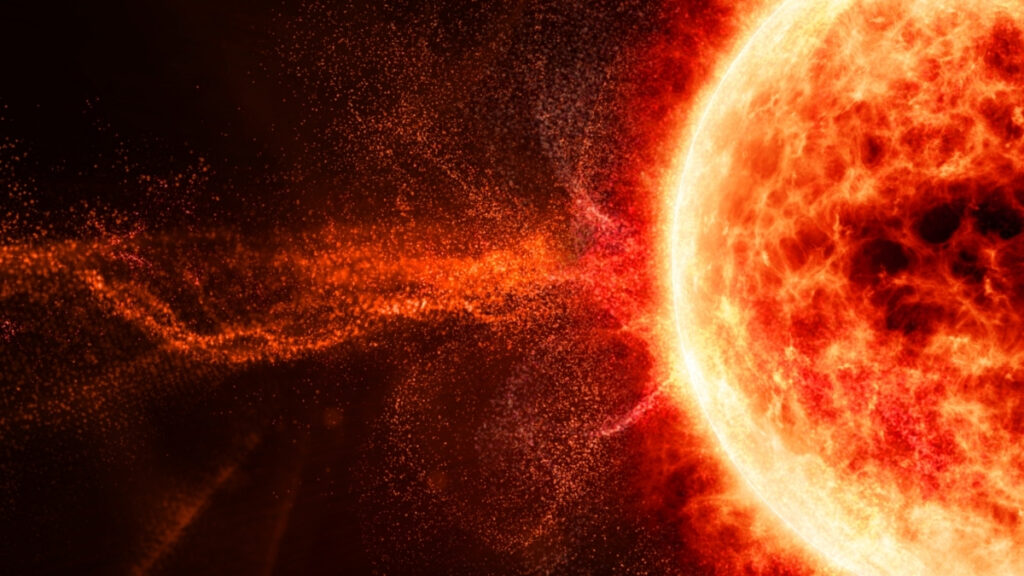
Recent research has unveiled how solar phenomena, referred to as solar “tornadoes,” could pose significant risks to Earth’s technological infrastructure. These findings, published in the Astrophysical Journal in October 2025, shed light on the interactions between solar ejections and Earth’s magnetic field, potentially leading to damaging geomagnetic storms.
During periods of intense solar activity, the Sun ejects charged particles and magnetic fields into space, with the most powerful events known as coronal mass ejections (CMEs). These CMEs can travel at speeds reaching 1,800 miles per second (approximately 2,897 kilometers per second) and carry massive amounts of material. For context, one CME could transport a volume of material equivalent to all the Great Lakes from New York City to Los Angeles in under two seconds.
When these solar ejections collide with Earth’s magnetic shield, they can cause geomagnetic storms, which not only create stunning auroras but also have the potential to disrupt electrical grids and damage transformers. Understanding these interactions is crucial for predicting and mitigating potential damage.
Uncovering the Mechanisms of Solar Tornadoes
The research team, led by space weather experts Mojtaba Akhavan-Tafti and Ward B. (Chip) Manchester from the University of Michigan, began their investigation in the summer of 2023. They were intrigued by geomagnetic storms that occurred without prior predictions of solar eruptions. This inconsistency prompted them to explore smaller space weather phenomena that might form outside the Sun’s atmosphere.
The team focused on magnetic flux ropes, which resemble tornadoes and consist of bundles of magnetic fields. These structures had been observed by satellites, but the team aimed to understand how they are generated in the space between the Sun and Earth.
Their initial attempts to locate these smaller events were challenging due to the limitations of existing global simulations, which primarily focus on larger solar eruptions. These simulations cannot resolve the finer details necessary to identify flux ropes, akin to trying to detect a hurricane while only observing global weather patterns.
To address this, the researchers modified their approach. They enhanced the simulation resolution along the trajectory of the flux ropes, allowing them to analyze features with significantly greater detail than prior models.
Findings and Future Implications
The new simulations yielded remarkable results. They revealed that flux ropes form when a solar eruption collides with slower-moving solar wind, creating complex structures that can persist longer than anticipated. This discovery parallels meteorological phenomena, where a powerful storm can spawn multiple tornadoes.
The high-resolution simulations indicated that these flux ropes could generate significant geomagnetic storms, which could disrupt Earth’s technology. The researchers noted the critical importance of understanding these local space weather events, which could escalate in severity without adequate monitoring.
The implications of this research extend beyond theoretical interest. The team emphasizes the need for advanced monitoring systems capable of detecting these subtle yet potentially harmful phenomena. Current space weather monitors may miss these flux ropes, underscoring the importance of deploying additional satellites designed to capture detailed observations.
As scientists work on developing next-generation space missions, there is hope that improved detection capabilities will enhance our ability to predict the impacts of extreme space weather on Earth. This research not only advances our understanding of solar dynamics but also highlights the interconnectedness of cosmic events and terrestrial technology.
Understanding solar tornadoes and their potential impacts on Earth is vital for safeguarding critical infrastructure. The findings from this study provide a foundational step toward better forecasting and preparedness for future space weather events.







